| Hong Kong Travel Record December 23, 2000: The longest day |
|
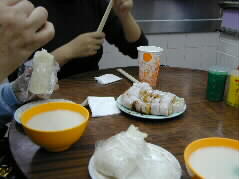 |
Lillian came to the hotel this morning as well and took us to breakfast in a small restaurant on the street. Today's breakfast is consisted of such foods like steamed sticky rice stick and soup. In the back center is an unusual dish of steamed rice powder that contains shrimp meat. It was really tasty. |
| A cooker demonstrates how to make it. Rice powder is completely dissolved into hot water in a large bowl. The surface skin is skillfully taken out of the bowl to make a thin sheet of rice film on a bamboo screen. The film is then rolled up and cut into pieces. The skill is a part of taste, I thought. |
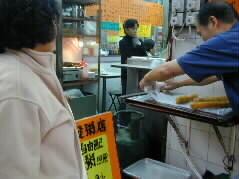 |
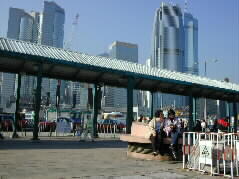 |
Today, we will visit Lantau Island, the biggest island in Hong Kong. This time, we took a ferryboat from the central pier. I am very glad that I can experience every kind of transportation system. |
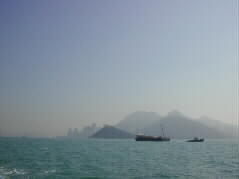 |
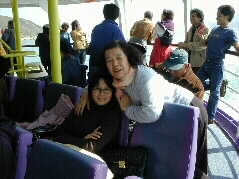 |
| Pleasant an hour sailing took us to Mui Wo port on Lantau Island. We then got on a bus to Po Lin Monastery in the foot of Fung Wong Shan peak to see the world largest Buddha statue.
The bus climbed up the mountain with big noise. |
 |
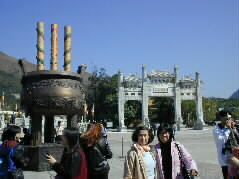 |
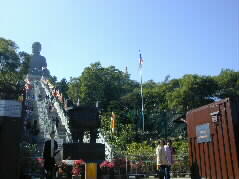 |
| We arrived at Po Lin Monastery. A tall gate and a large incense holder welcomed us. | A long steep stairway leads us to the Buddha statue. |
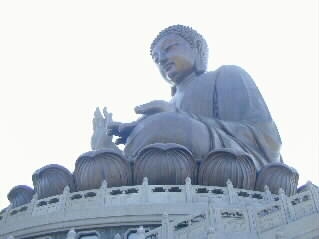 |
|
| The world largest Buddha statue is made of bronze, sitting on the three layers of lotus petals. The height of the statue is 26 meters and the weight is 202 ton. It is visible even from Macau in a clear day. The Buddha looks very young and handsome. | |
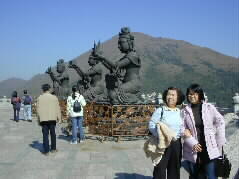 |
Elegant beauties of heavenly maiden surround the Buddha. |
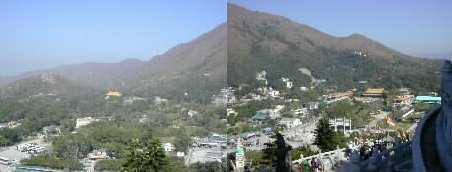 |
|
| A lot of monastery facilities are stretching under the sight. Three monks first built Po Lin Monastery in 1905 for meditation. The simple original monastery turned to formal religious house in 1927. In 1960s, a large amount of donation refurbished the monastery as it is today, the biggest monastery complex in Hong Kong. | |
| We came out from the inside of the Buddha statue through a lotus petal on the back. | 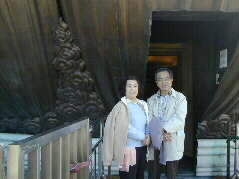 |
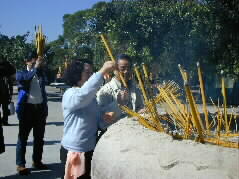 |
Following the believers, we also put incenses into a large stand. |
| A remote view of Buddha from a building in the complex. | 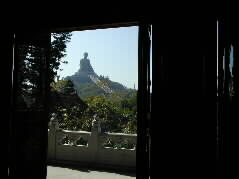 |
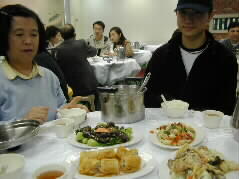 |
Suddenly, we became four in number: a male student of Lillian joined us, Mr. Kenny.
Kenny is a beautician. We took famous vegetarian diet in the restaurant of the complex. We also enjoyed sweet Chinese dessert. |
| After the Monastery, we visited Tai O, the last sanctuary of old fishery village in Hong Kong. |
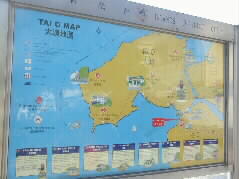 |
 |
|
| Fisherman's houses stand on a narrow creek. Most residents are the descendant of fishing tribe called Tang in ancient days. | |
 |
On a drawbridge; from left, Mie, Lillian, and Mr. Kenny. |
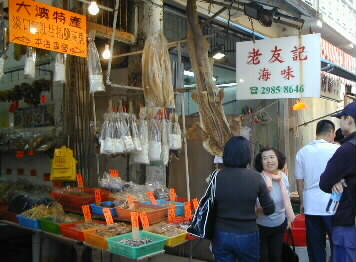 |
|
| Hong Kong Island is surrounded with sea, of course. But people can't eat fish taken in the water. Here in Tai O, however, water is clean and the catch is dried in the sun. It is really rare in those days. A large dried shark is hung down from the ceiling. | |
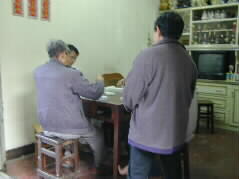 |
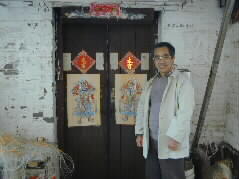 |
| We enjoyed strolling along a narrow pass of the village. Rattling noise lured me and I found people enjoying mah-jongg in the afternoon. Every house provides such altar to worship the house God. Red candles in front of the entrance and in-house altar represent the traditional way of life of Tai O residents. | |
| Bus, subway, again bus took us to Shatin New City across Lion mountain range lying behind Kowloon district. A view of Shatin looking down from a two-storied bus. |
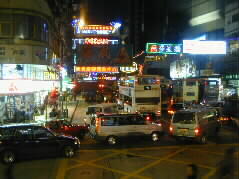 |
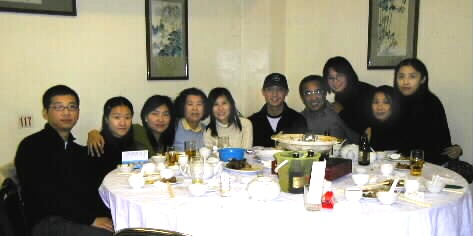 |
|
| In a large Chinese restaurant in Shatin, we had a dinner party together with the pupils of Lillian's Japanese class: from left, Eric, Emily, May, Mie, Denise, Kenny, Ken, Lillian, May, and Suki. | |
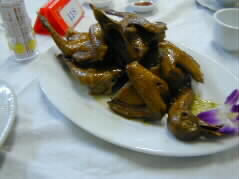 |
Cantonese cuisine started from the dishes of pigeon. This is the first experience for me. |
 |
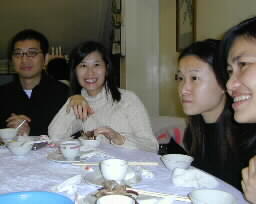 |
| Each student is eager to listen to Japanese I speak taking memos.
|
I reflected myself how I use carelessly those wordings such as polite expression or grammar. |
| Guangzhou style hot pod contains fish, meat, vegetables, prawn, and other ingredients.
Lillian, the teacher of the class, comments to change the seat and talk to us in Japanese. |
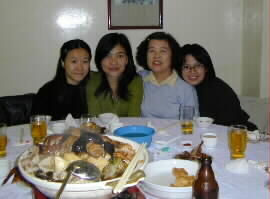 |
 |
Lillian bought a wonderful cap in Tai O as a Christmas present to my husband Ken who is happy in chatting with Denise. |
| Cantonese, Japanese, and English fly over the table. Recently, most Hong Kongnians can speak three languages. It is really a wonderful thing. | 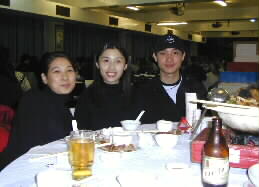 |
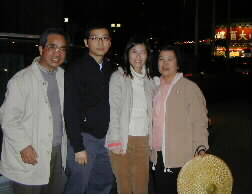 |
The pleasant party was over before I knew. Mr. Eric, together with Denise, kindly drove back to the hotel by his car. Young people I met today will soon be able to speak Japanese and take active parts in world business. I am happy to see them in near future. See you again! |